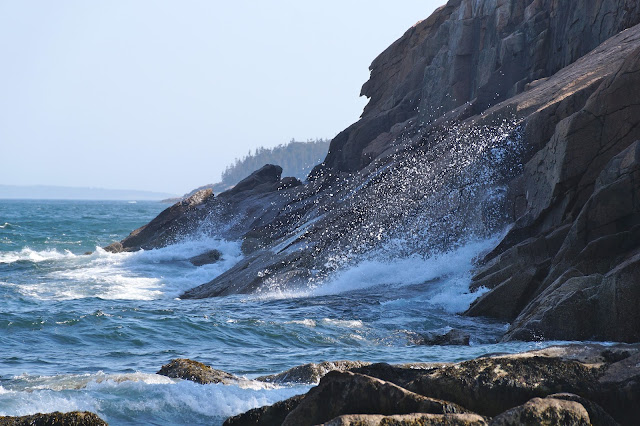Three years ago we made a life changing decision. Let’s
retire and RV full time!
Next came the questions: when and how.
When became November 2013 at which time we became
Snowbirds and escaped to a warm, sunny winter location.
How was a much bigger question. We had not
camped/RVed since we moved to Surrey 14 years before. Would a fifth wheel
trailer or motorhome suit us best? Neither our Nissan van nor Toyota Yaris
would be suitable to tow a trailer or be flat towed by a motorhome. Our vehicle
options were open.
A fifth wheel trailer would require a big truck. My vision
would not allow me to drive such a truck even without the trailer. One
possibility eliminated.
A motorhome towing a small car would allow me to drive the
car comfortably. How big a motorhome? The September Snowbird RV Show and Sale
in Abbotsford was the perfect opportunity to explore every kind of camper and
RV imaginable. We started with camper vans and kept increasing the size.
Living in an RV full time would be very different from
vacations in an RV. In our years of camping we progressed from a tent trailer
to a 17’ travel trailer then a van conversion. A Class A motorhome was for old
people who often didn’t know how to handle such a big unit!
Well, maybe we are a bit older and want the comforts of home
on the road.
Ralph has had a Class 1 driver’s license for over 40 years
so he knows how to drive the big ones. Maybe we could look at a few Class A
motorhomes but we really had no idea what features would suit our proposed
lifestyle.
We talked to friends and salespeople to gather information.
We have now learned the following from conversations and almost 2 years of living
in our motorhome.
1. Many campgrounds cannot accommodate units over
40 feet. That would eliminate some points of interest.
2. Some units, diesel in particular, have the
entrance door in front of the passenger seat. That means every time the driver
exits the unit the passenger must move. The access is often awkward when
bringing in loads of groceries, etc. Mid entry door is much easier when going
in and out several times a day.
3. In a Class A the driver’s compartment is part of
the living area. The seats turn around and the front windows allow lots of
natural light.
4. Most newer units have windows on all 4 sides
which allows a view of the weather in all directions.
5. Our unit has slide-outs on both sides of the
living room. This makes the room feel spacious and welcoming.
6. The couch in most motorhomes is a hide-a-bed
with seat belts, which allows overnight company to travel with us.
7. Our toilet is in a separate room, which allows
us to comfortably use the shower at the same time.
8. The 4 door fridge gives us lots of room for
groceries and leftovers.
9. The double sink allows us to wash dishes easily.
1. We
have not seen another motorhome with as much counter space as we have.
Preparing meals 365 days a year is much easier with space to spread out.
1. Gas or diesel? That decision required a great
deal of discussion. Ralph has been in the bus industry for decades and is very
familiar with diesel equipment. However, the purchase price and the maintenance
costs are higher with the diesel. But the ride is smoother and the power is
greater with the diesel. In the end cost won since it would take several years
for the overall costs to balance out. Who knows what we might be doing in 10
years. We hope to continue this lifestyle for many years but we don’t have a
crystal ball.
2. Our search ended when we received a phone call
from O’Connor RV in Chilliwack. They had just taken on consignment a 2008 38’
Georgetown XL by Forest River with only 4,400 km. Wow, it still smelled new and
was in great condition.
3. The Georgetown has good construction and minimal
road squeaks.
4. It has a short wheelbase with a wide turning
radius but Ralph quickly learned the parameters.
5. During our first trip south we stopped at
Henderson Line Up in Grants Pass, Oregon. They have a very good reputation
across the country. No sales tax in
Oregon is an extra bonus. Henderson provided a comprehensive estimate of upgrades
that would improve the performance and comfort of our new home.
6. Before leaving Surrey we had a 2-axle wheel
alignment but Ralph was still not satisfied with the handling, particularly
when being passed by large vehicles. Henderson’s installed sway bars and track
bars that improved the road handling of the unit.
7. Our next expenditure was the installation of the
Banks intake/exhaust upgrade and adjusting the transmission shift points. That
provided enough additional power that Ralph is content on the hills.
8. Our next step was to upgrade the shock absorbers
at Hendersons. Now the ride is noticeably smoother.
These upgrades have made our travel more comfortable. We
have a gas motorhome that handles well but has not cost as much as a diesel.































